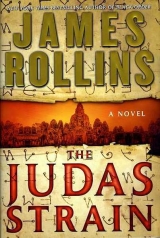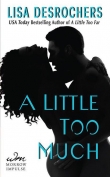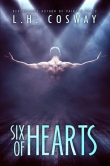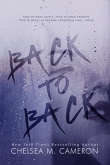
Текст книги "The Judas Strain"
Автор книги: James Rollins
Жанры:
Прочие приключения
,сообщить о нарушении
Текущая страница: 30 (всего у книги 30 страниц)
Epilogue
AUGUST 11, 8:32 A.M.
Takoma Park, Maryland
“The restoration job looks great,” Gray said.
His father slid a cloth moist with Turtle Wax over the hood of the Thunderbird. They had rescued the convertible out of impound, towing it away on a flatbed. Painter had arranged to have the T-bird repaired at the best classic restoration shop in the D.C. area. His father had gotten it back last week, but this was the first time Gray had seen it.
His father stepped back, hands on his hips. He wore an oil-stained undershirt and long shorts, showing off his new leg, another courtesy of Sigma, DARPA-designed, exceptionally realistic. But it wasn’t the leg that concerned his father at the moment.
“Gray, what do you think of these new rims? Not as nice as my old Kelsey wire wheels.”
Gray came around to stand next to his dad. They looked the same to him. “You’re right,” he said anyway. “These suck.”
“Hmm,” his father said noncommittally. “But they were free. That Painter fellow was pretty generous.”
Gray could get a sense of where this was leading. “Dad…”
“Your mother and I talked it over,” he said, still staring at the wheels. “We think you should stay with Sigma.”
Gray scratched his head. He already had his letter of resignation in his pocket. When he had returned from Cambodia, he had found his father in the hospital, his chest burned from Taser strikes. His mother’s arm was in a sling from a minor fracture to her wrist. The worst was his mother’s black eye.
All because of him.
He had almost lost it in the hospital.
What security could he offer his parents if he continued? The Guild certainly knew who he was, where to find his folks. The only way to keep them safe was to resign. Painter tried to assure him that the Guild would back off. That retribution and retaliation were not their methods. In future missions, Painter had assured Gray his parents would be secured before he left.
But some missions came crashing up your driveway in a motorcycle.
There was no way to plan against that.
“Gray,” his father pressed, “what you do is important. You can’t let worries about us stop you.”
“Dad…”
He lifted his hand. “I’ve said my piece. You make your own decision. I have to figure out if I like these rims or not.”
Gray started to turn away.
His father reached out, grabbed his shoulder, and pulled him into a one-armed hug. He gave him one squeeze – then pushed him away a bit. “Go see what your mother is burning for breakfast.”
Gray crossed to the back door and met his mother coming out.
“Oh, Gray, I just got off the phone with Kat. She said you were heading over there this morning.”
“Before I go to the office. I have some of Monk’s stuff on the front porch. Dad’s letting me borrow the T-bird so I can run some errands for Kat this afternoon, too.”
“I know the funeral isn’t for another two days, but I have some pies. Could you take those over, too?”
“Pies?” Gray asked doubtfully.
“Don’t worry. I bought them from the bakery down the street. Oh, and I have some toys for Penelope. I found this cute jumper with elephants and…”
He just kept nodding, knowing eventually his mother would stop.
“How is Kat holding up?” she finally finished.
Gray shook his head. “Good days and bad.”
Mostly bad.
His mother sighed. “Let me get those pies. Last time I saw Kat she was thin as a rail, that poor girl.”
Gray soon had a paper grocery bag stacked with boxed pies. He headed through the house to the front porch. He pushed outside and crossed to the stack of boxes. They contained everything from Monk’s locker and a few things kept at Gray’s apartment.
Gray also had a box to take to the funeral home. Ryder Blunt, the billionaire, had returned Monk’s prosthetic hand, having to cut through the wing strut of his seaplane to free it. Kat had refused to even look at it. And Gray didn’t blame her. But she did ask that the hand be added to the empty casket that would be lowered into Arlington National Cemetery. They were each supposed to also bring tokens of remembrances to include in the casket.
Gray had found a copy of Monk’s favorite movie. The man had left it at Gray’s apartment after a pizza-and-popcorn night. Sound of Music. Monk knew all the words, singing along as he bounced Penelope on his knee. Monk had the biggest heart of any man he knew.
He would’ve made a great father.
Gray crossed to the porch swing. He pulled out his letter of resignation folded into threes, crumpled a bit. He straightened the crinkles between his thumb and forefinger. He wished he could talk to Monk about this.
As he sat, he heard something scratching among the boxes.
The neighborhood squirrels were fearless.
Oh, damn, the pies…
Gray got up and crossed to the stack. But the noise wasn’t coming from the bag of pies. He frowned. He shifted around until he found the right box.
What the hell?
Gray removed the top.
Painter hadn’t only commissioned the repair to his father’s leg and trashed T-bird. He had not wanted to send Monk’s hand into the ground all charred. So he had the prosthesis meticulously restored. It rested in a foam mold.
Only now one of the fingers was digging at the foam.
Gray lifted the hand. The index finger wiggled in the air. Gray felt a shudder pass through him. What if Kat had seen this?
Must be a short in the wiring.
He set the hand down on the porch chair. The finger continued to move, tapping at the wooden seat. Gray turned away in disgust. He tugged out his cell phone, ready to blast whoever messed up at Sigma.
But as he dialed, his ear stayed morbidly attuned to the tapping. As he listened, Gray realized it drummed out a pattern.
In Morse code.
A familiar distress call.
S.O.S.
Gray swung around, staring down at the hand.
It couldn’t be.
“Monk…?”
2:45 P.M.
Cardamom Mountains, Cambodia
Susan Tunis climbed the steep ravine of the jungle-shrouded mountains, following the brilliant cascade of a waterfall. A fine mist hung in the air, scintillating in the dappled sunlight. A pileated gibbon chattered in protest at her passage, hanging from a vine by one arm, its black face framed by gray fur.
She continued onward, moving purposefully through the rain forest. The Cardamom Mountains formed the border between Cambodia and Thailand, an inhospitable land of dense forests and inaccessible hills. On her fourth day into the mountains, sleeping in a hammock under mosquito netting, she had spotted an endangered Indochinese tiger, with its stocky body and tightly drawn stripes. It slipped through the forest, uttering a low growl.
Otherwise, she hadn’t seen anything larger than the howling gibbon.
Certainly no people.
Due to the isolation and difficult terrain, the mountains had once been the last refuge of the Khmer Rouge guerrillas, who retreated here because of the harsh terrain. Land mines were still a great risk.
But Susan suspected she was days past where even the guerrillas dared to tread. She reached the crest of a ridge and followed the stream across a forested plateau. Ahead, a few small shapes slipped into the water, from perches on logs.
Batagur baska.
Asian river terrapin. One of the most endangered species on the planet.
Also known as the Royal Turtle, revered as guardians of the gods.
Here they made their home.
Just past their mud nests and hibernating burrows, Susan came upon a collection of jars by the river, cylindrical clay pots standing three feet tall, scribed with lichen, carved with intricate designs. Ancient burial jars. They contained the bones of kings and queens. There were such sites scattered throughout the mountains, considered very sacred.
But no one visited this particular site, the most ancient of them all.
Susan left the river and passed through the cemetery. The burial jars eventually thinned as the forest abutted against a cracked cliff face.
She knew where she had to go, knew from the moment she had been revived by Dr. Cummings. She had gained more than just the cure for the world – but she had told no one.
It was not the time.
Susan reached the cliff and crossed to a lightning-bolt-shaped crack, gaping two feet wide at the base. She wiggled out of her pack and turned sideways to push into the fissure. She took tiny steps, sliding deeper and deeper. Behind her, the sunlight faded, growing thinner and thinner.
Soon she was in total darkness.
Susan stretched out a hand, reaching her arm forward. A glowing fire, willed from within, ignited at her fingertips and spread down to her shoulder. She raised her arm like a lamp.
Here was another secret she had kept.
But not her greatest.
Lighting her own path, she headed deeper.
She didn’t know how far she traveled, losing the firm passage of time. But it was certainly well into the night.
Eventually a glow appeared, flowing back to her.
Welcoming her.
A match to her own.
She continued at her same pace, sensing no need to hurry.
At last, she entered a great vaulted space. The source of the light became clear. Spreading far into the distance, small fires shone like a scatter of stars across the bowled floor. Hundreds and hundreds. She walked out into the cavern, passing the fires.
Each was a figure, spread-eagled on the floor, ablaze with an inner fire, burning flesh to a crystalline translucency. She stared down into one. All that remained visible was the nervous system: brain, spinal cord, and the vast tangle of peripheral nerves. The open arms, flowing with filamentous fibers, looked like unfurled wings, feathered with tufts of fine nerve bundles.
Angels in the dark.
Slumbering. Waiting.
Susan marched onward. She reached a figure who wasn’t as consumed, who still showed the beat of a heart and the flow of blood, where bones still hinted at form and function.
Susan found an open spot at his side and lay down. She stretched her arms. Her fingertips brushed her neighbor.
The words reached her in an old Italian dialect, but she understood.
Is it done?
She sighed. Yes. I am the last. The source has been destroyed.
Then rest, child.
For how long? When will the world be ready?
He answered her. It would be a very long sleep.
What am I to do?
Go home, my child…for now, go home.
Susan closed her eyes and let that which needed to sleep drop away. All else, she slipped into the bubble that composed the entirety of her life and stepped through it to what lay beyond.
Light blinded as if she stared into the full face of the sun. She lowered her gaze, blinking away the glare. The world filled back in around her. The gentle rock of the boat under her bare feet. The cry of a lone gull, the hush of waves against the hull, and the sweep of wind over her skin.
Was this a dream, a memory…or something more?
She inhaled the salt air. A beautiful day.
She crossed to the ship’s rail and stared out at the blue expanse. Green islands dotted the distance. A few clouds drifted. She heard the tread of feet on the stairs leading up from the cabin.
As she turned, he climbed into view, pulling up with his arms, dressed in shorts and an Ocean Pacific T-shirt. He spotted her, with a startled expression.
Then he smiled. “Oh, there you are.”
Susan rushed to Gregg, wrapping her arms around her husband.
Downstairs, Oscar barked. A grumpy voice yelled back at the old dog.
Susan snugged against her husband, listening to the beat of his heart.
He hugged her back. “What is it, Susan?”
She stared up into Gregg’s face, raised a finger to the three-day stubble on his chin. Then tipped up on her toes to reach his lips.
He bent down to meet her.
And she knew she was home.
AUTHOR’S NOTE
Truth or Fiction
Once again, thanks for accompanying me on this journey! As usual, I thought I’d use these last pages to perform a postmortem on the novel, to separate fact from fiction. I’ve divided the postmortem by general topics:
MARCO POLO:The forward to this novel raised the central mystery concerning the fate of Polo’s fleet during his return trip to Venice. What happened to the ships and men still remains a mystery. As to Marco’s potential love affair with Princess Kokejin, rumors persist, especially as he died with the princess’s headpiece in his possession. As to Marco’s body after his death, it did indeed vanish out of the Church of San Lorenzo, its whereabouts still unknown.
ANGELIC SCRIPT AND OTHER LANGUAGE ISSUES:Angelic script was first developed by Johannes Trithemius and Heinrich Agrippa, who claimed that by studying these symbols, it was possible to communicate with angels. The script was derived from ancient Hebrew characters. Similarly, adepts of Jewish Kabbalah believe that pathways to inner wisdom can be opened by studying the shapes and curves of its characters. Finally, moving to modern times, we ask the question: Is there a hidden language buried in our genetic code? According to an article in Sciencemagazine (1994), the answer is a resounding yes. Though what might be written there remains unknown.
PLAGUES:Eyam, a village in England, did indeed have an unusual survival rate during the Black Plague, a result of a genetic abnormality in half its populace. Strange but true. As to anthrax, the only difference between the deadly form of this bacterium and its peaceful garden-dwelling cousin are two rings of genetic code called plasmids. Which begs the question, where did those plasmidscome from?
FAUNA:Christmas Island red land crabs do indeed have a spectacular migration each year, during which millions of the large crabs journey to the sea. Their claws have also been known to puncture tires. Moving on to those pesky liver flukes, the descriptions of their strange and disturbing life cycles are accurate. As to our predatory squids, I based them on the species Taningia danae, which grow to six feet in length, hunt in packs, have brilliant light displays, and bear claws on their suckers. Definitely tough calamari.
CANNIBALS AND PIRATES:Indonesian piracy is still a booming growth industry. Pick up applications at the back of the room. As to cannibals, tribes can still be found among the Indonesian islands, but you’ll have to bring your own seasonings. As to the genetic condition known as Prader-Willi (resulting in insatiable appetites), it is a real and horrible condition, but is in no way related to cannibalism. Were we all once cannibals? Current research into genetics reveals humans carry a specific set of genes against diseases that can be acquired only by eating human flesh.
ANGKOR:All the details of the ruins – from the Churning of the Milk mythology to the two hundred stone bodhisattva faces – are accurate, including how the temples were laid out to mimic star patterns, specifically the constellation of Draco. For more details on this, check out Heaven’s Mirrorby Graham Hancock and Santha Faiia.
ALL THINGS BACTERIA:There are indeed milky seas of glowing algae that bloom up periodically. And according to a series of disturbing articles in the Los Angeles Times,our seas are increasingly threatened with the resurgence of ancient slimes, poisonous jellyfish, burning seaweeds, and toxic clouds bursting from algal blooms. As to the strangest claim in the novel: that only 10 percent of the cells in our body are human (and the rest are bacteria and parasites). This is true! There is a wonderful book exploring this topic that is as horrific as it is humorous, Human Wildlifeby Dr. Robert Buckman. Just don’t read it before you eat.
ACKNOWLEDGMENTS
Too many people, not enough space.
First, to everyone at HarperCollins, I owe you all a long-overdue acknowledgment for the past decade of guidance, hard work, and expertise:
To the big guns, Michael Morrison and Lisa Gallagher, thanks for all the support and confidence. Past, present, and future.
To the art directors, Richard Aquan and Thomas Egner, thanks for making the books stand out so handsomely. I could not be prouder.
To the marketing directors, Adrienne DiPietro and Tavia Kowalchuk, thanks for your ongoing leadership in getting the books out there…and noticed!
To the best PR team in the world, Pam Spengler-Jaffee and Buzzy Porter, thanks for not making me jump out of a bush plane in Alaska.
To a trio of women who put me on the map and in bookstores – Lynn Grady, Liate Stehlik, and Debbie Stier – a huge thank-you (and I’m writing this on bended knee).
To the indomitable force behind national sales and accounts – Carla Parker, Brian Grogan, Brian McSharry, and Mark Gustafson – thanks for all your extra efforts and energies to elbow the novels into stores and onto shelves.
To Mike Spradlin, thanks for both sales and zombies (in no particular order).
And to the hundred and one others whom I’ve failed to mention, but whom I appreciate no less – THANKS!
Moving closer to home, I must acknowledge my dark cabal who tear apart each chapter and reconstruct it into something better: Penny Hill, Steve and Judy Prey, Chris Crowe, Lee Garrett, Michael Gallowglas, Leonard Little, Kathy L’Ecluse, Debbie Nelson, Rita Rippetoe, Dave Murray, Dennis Grayson, Jane O’Riva, and Caroline Williams. And I’d like to give a special shout-out to Steve Prey for the book’s map and Penny Hill for all the working lunches. To Cherei McCarter for the great series of articles featuring advanced weaponry. And to David Sylvian for listening ad nauseam as I read sections out loud (your ears will stop bleeding).
And once again, to the four people instrumental at all levels of production: my fantastic editor, Lyssa Keusch, and her stalwart colleague May Chen, and my indomitable agents, Russ Galen and Danny Baror. You all rock…big-time!
And lastly, I must stress any and all errors of fact or detail fall squarely on my own shoulders.
About the Author
JAMES ROLLINSis the bestselling author of eight previous novels: Subterranean, Excavation, Deep Fathom, Amazonia, Ice Hunt, Sandstorm, Map of Bones, and Black Order. He has a doctorate in veterinary medicine and his own practice in Sacramento, California. An amateur spelunker and a certified scuba enthusiast, you’ll often find him either underground or underwater.








